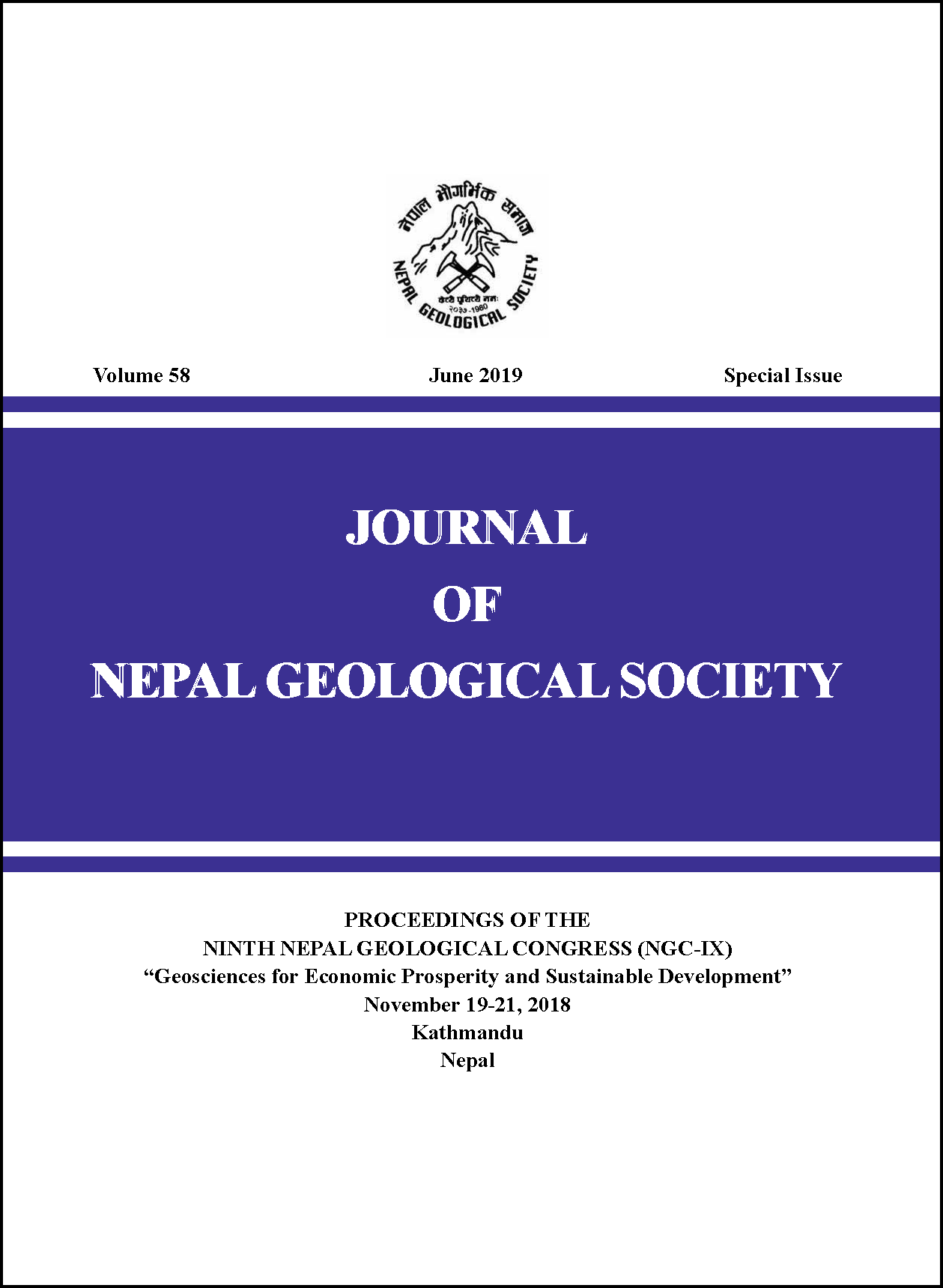Geology of the area between Bardibas and Sindhuli Madi, Sub-Himalaya, Central Nepal
DOI:
https://doi.org/10.3126/jngs.v58i0.24597Keywords:
Lithostratigraphy, Bardibas Thrust, Kamala Thrust, Siwalik Group, Patu ThrustAbstract
The Siwalik Group (Sub-Himalaya) is the east-west extending youngest mountain belt formed by the sediments derived from the rising Himalaya on the north. The Siwalik Group is separated from the Lesser Himalaya to the north by the Main Boundary Thrust (MBT), and the Indo-Gangetic Plain to the south by the Main Frontal Thrust (MFT). The study was carried out mainly along the Ratu Nadi, Kamala Nadi river sections and was lithostratigraphically divided into the Lower Siwalik, Middle Siwalik, and Upper Siwalik, from the bottom to the top section, respectively. The Lower Siwalik is composed of fine-grained greenish grey calcareous sandstone (subarkose and lithic arenite), variegated mudstone, and calcareous siltstone. The Lower Siwalik is exposed due to the Marine Khola Thrust in the Gadyauli Khola, and sandstone there is more indurated and non-calcareous. The Middle Siwalik is mainly comprised of the medium- to coarse-grained salt-and-pepper sandstone (arkose and subarkose) with large cross lamination, calcareous sand lenses, convolute bedding, dark grey siltstone and mudstone. Plant fossils are also present in the finely laminated clay bed of the Middle Siwalik along the Ratu Nadi section. The Upper Siwalik comprises of mud- to sand-supported pebble to cobble conglomerates.
Downloads
Downloads
Published
How to Cite
Issue
Section
License
© Nepal Geological Society




